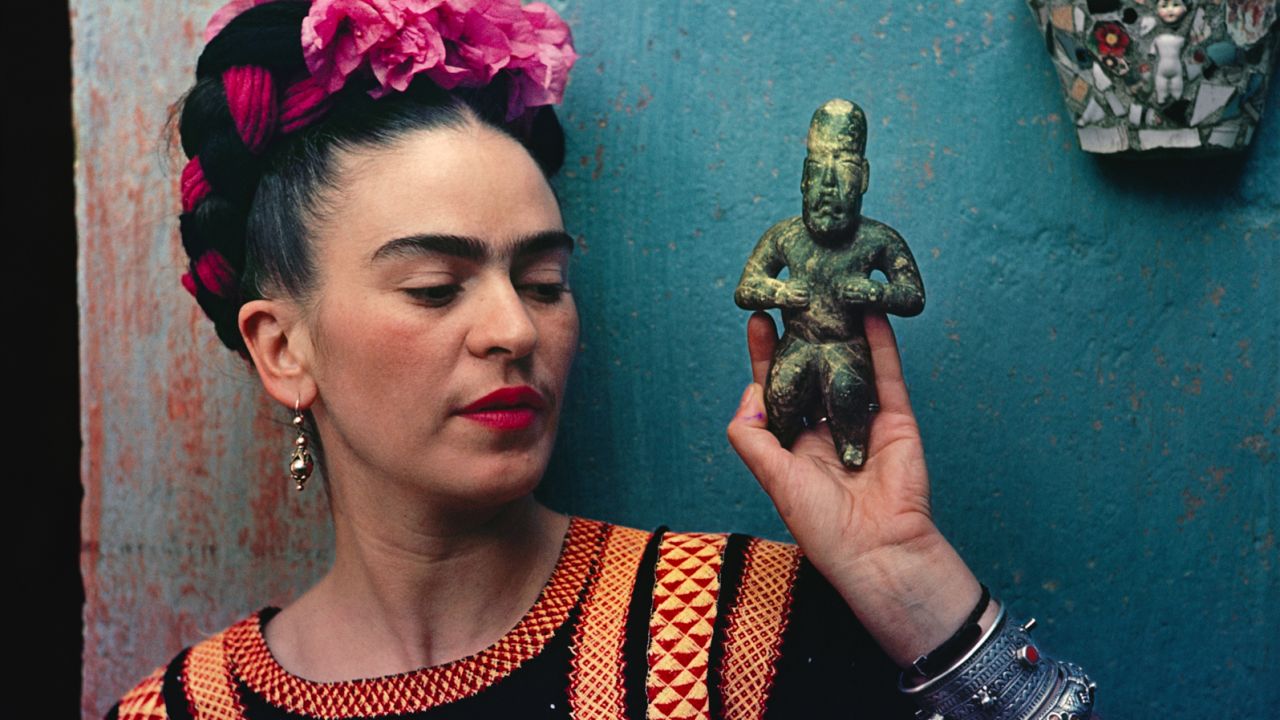
30 interesting facts about Frida Kahlo
- 👁️ 301
Frida Kahlo was a Mexican painter known for her striking and emotive works, often inspired by her own life and physical suffering. Born on July 6, 1907, in Coyoacán, Mexico City, she became a symbol of Mexican national and indigenous traditions and an advocate for feminism and socialism. Her paintings are famous for their bold colours, symbolism, and detailed portrayal of pain and passion. Although Kahlo’s work was not widely recognised during her lifetime, she has since become an icon in various social and cultural movements, and her art continues to inspire and challenge viewers around the world.
Facts about Frida Kahlo:
- Frida Kahlo’s full name was Magdalena Carmen Frida Kahlo y Calderón.
- She was involved in a severe bus accident at the age of 18, which led to lifelong health problems and inspired much of her artwork.
- Frida Kahlo married the famous Mexican muralist Diego Rivera, a union marked by both deep love and turmoil.
- She painted 55 self-portraits throughout her life, often depicting her physical and emotional pain.
- Frida was a prominent member of the Mexican Communist Party.
- She began painting while recovering from her bus accident, using a specially made easel that allowed her to paint in bed.
- Her first solo exhibition in Mexico was held a year before her death in 1953.
- Kahlo’s work combines elements of surrealism, symbolism, and traditional Mexican folk art.
- Her father was a German photographer, and her mother was of indigenous and Spanish descent.
- One of her most famous paintings, “The Two Fridas,” depicts her dual heritage and conflicting identities.
- Kahlo wore traditional Mexican clothing, not only as a political statement but also to conceal her physical ailments.
- The Blue House, where Kahlo was born, lived, and died, is now the Frida Kahlo Museum in Mexico City.
- Although she wanted to study medicine, the bus accident altered her path, leading her to pursue a career in art.
- She had a close friendship with Russian revolutionary Leon Trotsky, who lived in her home after seeking asylum in Mexico.
- Some art historians argue that Frida was a surrealist, but she herself said, “I never painted dreams. I painted my reality.”
- Kahlo underwent numerous surgeries throughout her life, resulting in the amputation of her right leg below the knee.
- She had a complex relationship with her sister Cristina, who at one point had an affair with Diego Rivera.
- In 1939, she exhibited her paintings in Paris, where her work was admired by artists like Pablo Picasso and Marcel Duchamp.
- Frida’s work often included symbolic representations of fertility and reproduction, influenced by her own miscarriages.
- Her art is known for bold and vibrant use of colour, reflecting Mexican culture and her own intense emotional state.
- One of her paintings, “Roots,” set the record in 2006 for the highest price paid for a Latin American work of art.
- Kahlo was openly bisexual and had affairs with both men and women.
- She had a pet monkey named Fulang-Chang, who appears in some of her self-portraits.
- Kahlo was an advocate for indigenous culture, often incorporating pre-Columbian symbols in her art.
- She frequently used religious symbolism, blending Christian iconography with Mexican cultural motifs.
- Her painting, “Henry Ford Hospital,” candidly depicts her grief following a miscarriage, a rare subject in art at that time.
- Kahlo’s work was rediscovered in the 1970s, and she became a symbol for feminist and LGBTQ+ movements.
- In 2002, Salma Hayek portrayed Kahlo in the film “Frida,” earning critical acclaim for her performance.
- Despite her many health challenges, Kahlo’s art was filled with life and energy, often using nature motifs.
- Her last painting was a still life with watermelons, completed shortly before her death, with the inscription “Viva La Vida” (Long Live Life).
Frida Kahlo’s life and art were intertwined in a tapestry of passion, pain, political commitment, and profound creativity. Her relentless honesty and courage to face physical and emotional suffering have turned her into a timeless symbol of resilience. The rich complexity of her work continues to resonate with audiences, transcending geographical and cultural boundaries. Kahlo’s legacy is not just in her stunning visual contributions to the art world but also in her embodiment of an unapologetically authentic and courageous life. Her story remains a source of inspiration and a reminder that art can be a powerful tool for personal expression and social change.
Frida Kahlo was a Mexican painter known for her striking and emotive works, often inspired by her own life and physical suffering. Born on July 6, 1907, in Coyoacán, Mexico City, she became a symbol of Mexican national and indigenous traditions and an advocate for feminism and socialism. Her paintings…